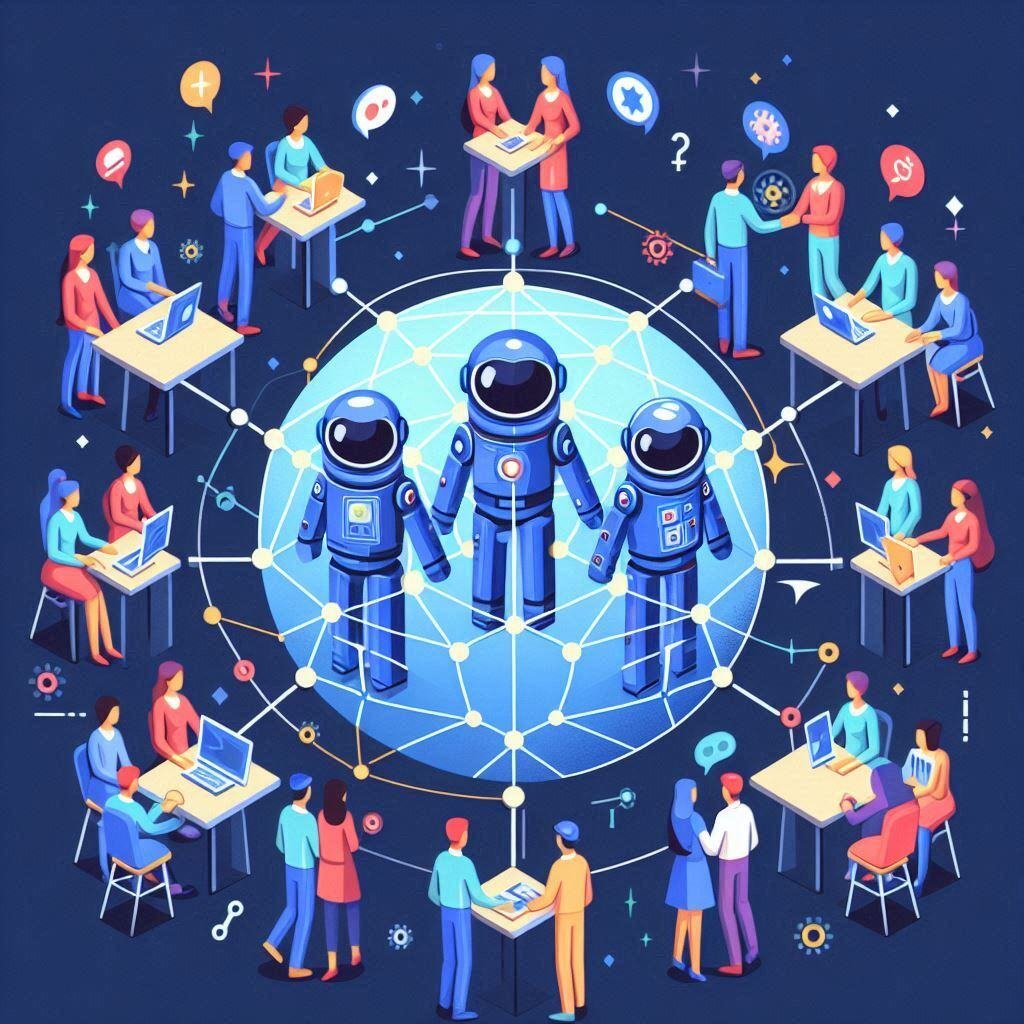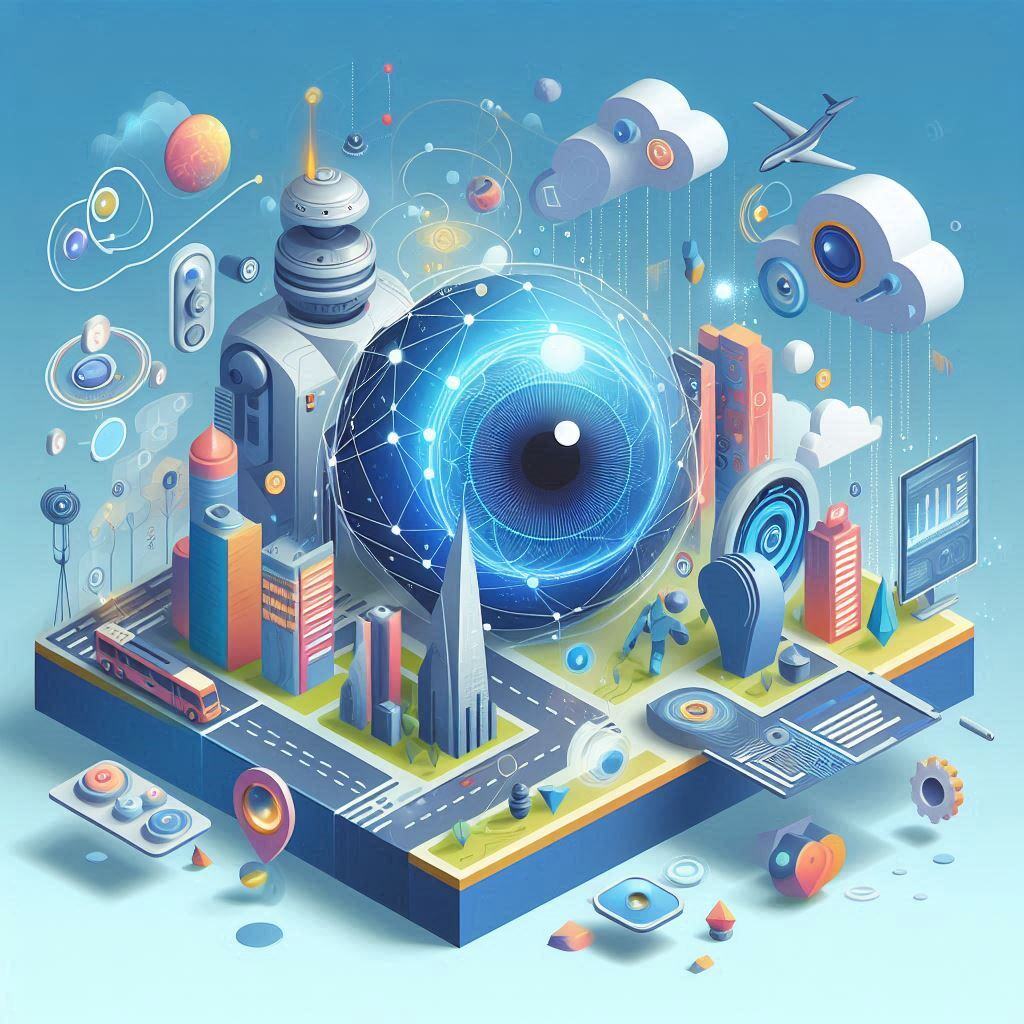3 min read
Multi-Agent Collaboration in Agentic AI
Multi-agent systems (MAS) represent a powerful AI approach where several agents work together to achieve complex tasks. Each agent operates...
Agentic AI represents a significant evolution in artificial intelligence by empowering AI systems to act autonomously, make decisions based on contextual understanding, and continuously learn from their interactions. These systems differ from traditional AI and generative AI by being able to pursue goals independently and adapt dynamically to changes within their environment. Let's explore the core concepts that define Agentic AI and how they enable businesses to achieve advanced levels of automation and decision-making.
Autonomy:
Autonomy in Agentic AI refers to the system’s ability to perform tasks without constant human oversight. Unlike traditional AI models that require explicit programming or user input to function, agentic systems make decisions and take actions based on a set of predefined goals or constraints. This autonomy allows them to handle complex workflows and adapt in real-time to new data or changing conditions.
Example: In enterprise software management, an agentic AI system might autonomously handle software updates, detect potential conflicts or compatibility issues, and initiate corrective actions, all without needing a human to oversee every step.
Reinforcement Learning (RL):
Reinforcement Learning is a key component that enables Agentic AI to learn and improve over time through trial and error. The AI receives feedback from its actions in the form of rewards or penalties, allowing it to refine its strategies to achieve better outcomes. This continuous learning loop is essential for adapting to new challenges and optimizing performance in dynamic environments.
Example: In customer engagement tools, agentic AI might use RL to test different communication strategies, analyzing user responses to improve customer satisfaction scores.
Contextual Understanding and Reasoning:
Agentic AI systems possess a sophisticated understanding of context, which allows them to reason about their environment and make informed decisions. This is more advanced than simply following rules; it involves assessing multiple variables and determining the best course of action based on real-time data and predefined objectives.
Example: In automated customer service, an AI system could analyze a customer’s query, past interactions, and sentiment to offer the most appropriate response or escalate the issue to a human agent.
Multi-Agent Collaboration:
One of the powerful aspects of Agentic AI is its ability to work with multiple AI agents within a system to achieve a common goal. Each agent can specialize in different tasks, share information, and coordinate actions, making it possible to handle complex, multi-step processes that require specialized knowledge and capabilities.
Example: In business operations, multiple agents might coordinate to manage the end-to-end supply chain process—from inventory management to order fulfillment and logistics—each optimizing its specific domain while working towards the overall goal of reducing costs and improving efficiency.
Goal-Oriented Action:
Unlike other AI models that are designed to perform specific tasks, agentic AI systems are built around achieving specific business objectives. These goals can be predefined or dynamically adjusted based on the AI's analysis of its environment. Goal-oriented action is what drives Agentic AI to adapt and refine its behavior over time to meet changing business needs.
Example: In sales optimization, an agentic AI might autonomously identify high-potential leads, develop personalized outreach strategies, and dynamically adjust those strategies based on real-time feedback and engagement metrics.
To implement Agentic AI effectively, understanding its architecture is crucial:
Core Agents and Subagents:
An agentic AI system is typically composed of a core agent that oversees the overall objectives and several subagents that manage specialized tasks. The core agent sets the strategy and delegates tasks to subagents, who then execute them based on their specific expertise (e.g., data analysis, user engagement, or operational tasks).
Learning and Memory Systems:
These systems allow agentic AI to store and recall past experiences, enabling it to learn from its history. This memory component helps the AI adapt strategies over time, ensuring that it can adjust to new data or changes in its operating environment efficiently.
Tools and Resources Integration:
Agentic AI relies on a variety of tools and resources, such as APIs, machine learning models, and data pipelines, to perform its tasks. These resources must be seamlessly integrated within the AI system to ensure smooth operation across different functions and departments within an organization.
Dynamic Workflow Automation:
Agentic AI can automate complex, multi-step workflows across different departments. For example, in marketing, the AI could autonomously manage campaign execution, dynamically allocate resources based on performance, and continuously test and optimize various creative strategies.
Enhanced Decision-Making in Operations:
In finance, an agentic AI could autonomously monitor transactions, detect anomalies, and execute corrective measures, all while learning from each scenario to improve its detection and response strategies.
Personalized Customer Interactions:
In customer service, Agentic AI could autonomously manage interactions across multiple channels, learn from each conversation, and tailor its responses to improve customer experience and retention rates.
Agentic AI offers a new approach to artificial intelligence by combining autonomy, contextual understanding, goal-oriented behavior, and continuous learning. These capabilities allow businesses to automate complex processes, improve decision-making, and adapt quickly to changing environments. By mastering these core concepts, you'll be prepared to leverage Agentic AI effectively in your organization.
In Lesson 2: Multi-Agent Collaboration, you’ll learn how multiple AI agents can work together within a business ecosystem to solve more complex challenges and achieve greater efficiency.

3 min read
Multi-agent systems (MAS) represent a powerful AI approach where several agents work together to achieve complex tasks. Each agent operates...

5 min read
As we wrap up our exploration of Agentic AI, let's take a moment to look ahead and see where this exciting field is headed. The world of AI is...

1 min read
Agentic AI is transforming how artificial intelligence systems operate by enabling them to make autonomous decisions, collaborate across multiple...

Use the agents as they are or easily customize them for your workflows with AI Studio by Integrail.

Use Integrail Benchmark Tool to find the most efficient models and test your own agents.